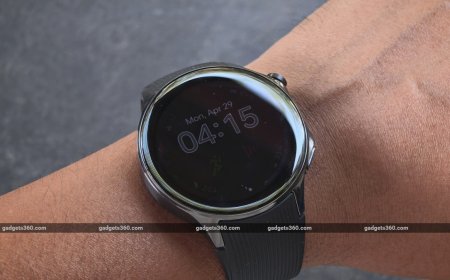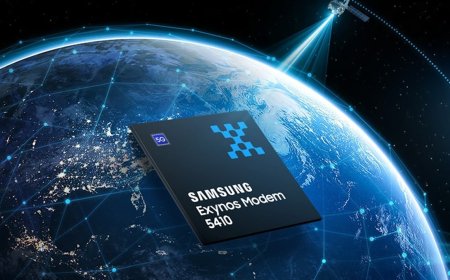The U.S. Department of Defense Just Created a Sky-High Opportunity for Drone Stocks

Over the last few days, drones have seen considerable attention from the Trump Administration, creating sky-high opportunity for ZenaTech (NASDAQ: ZENA), AeroVironment (NASDAQ: AVAV), Leonardo DRS Inc. (NASDAQ: DRS), L3Harris Technologies (NYSE: LHX) and Ondas Holdings (NASDAQ: ONDS).
For one, President Trump’s ‘One Big Beautiful Bill’ sets aside $33 billion in direct spending to advanced drones, autonomous systems, and broader US defense modernization, representing the largest single investment in these next-generation technologies to date.
Two, a new July 10, 2025 new policy directive from Secretary of Defense Pete Hegseth, ‘Unleashing U.S. Military Drone Dominance’ was just issued. In it, the Secretary of Defense says drones are “the biggest battlefield innovation in a generation.”
The memo also notes that, “On June 6th, President Trump issued Executive Order 14307 to support the American drone industry and arm our warfighters. The Department of Defense is going above and beyond this order. I am rescinding restrictive policies that hindered production and limited access to these vital technologies, unleashing the combined potential of American manufacturing and warfighter ingenuity. I am delegating authorities to procure and operate drones from the bureaucracy to our warfighters.”
“Our mission is threefold. First, we will bolster the nascent U.S. drone manufacturing base by approving hundreds of American products for purchase by our military. Second, we will power a technological leapfrog, arming our combat units with a variety of low-cost drones made by America's world-leading engineers and AI experts,” added Secretary Hegseth.
ZenaTech Also Says the Memo is A Game-Changing Policy Directive for ZenaDrone
ZenaTech also confirmed that under this policy directive, its entire portfolio of ZenaDrone drones qualify as Group 1–2 expendable assets and are now enabled for direct purchases by field commanders for both training and real-world missions. They also no longer need Green or Blue UAS (Unmanned Aerial System) certification.
With that, the company anticipates it will streamline bureaucracy, encourage innovation including the use of prototypes and commercial off-the-shelf systems, to ensure the US military can outpace adversaries by rapidly scaling drone capabilities on the battlefield.
This memo also marks a paradigm shift, placing battlefield acquisition authority in the hands of frontline commanders, not procurement offices.
In fact, as noted by ZenaTech ZenaTech CEO Shaun Passley, “The new policy directive is a game-changer for our company and the entire small drone industry. By removing traditional UAS certification barriers for Group 1 and 2 drones, it empowers us to deliver our cutting-edge and affordable solutions directly to frontline operators, accelerating innovation and battlefield impact like never before.”
“This means field commanders can buy our rugged, mission flexible drones directly for training, exercises, real-world missions, or even prototypes. We are now accelerating our manufacturing and defense business development efforts to meet the urgent demand and help the US military maintain its drone dominance,” he added.
Key Implications:
· Rapid Field Acquisition – ZenaDrone bypasses bureaucratic delays, available immediately to frontline units.
· Prototype-Friendly Deployment – Early-stage versions can be purchased and tested in operational contexts.
· Consumable Classification – Group 1 and 2 drones are now treated like expendable commodities rather than durable assets therefore inexpensive, replaceable, and low administrative burden.
· Multi-Mission Utility – Ready for ISR (Inspection, Surveillance and Reconnaissance) missions, counter-drone roles, and more.
Timelines from the Department of Defense Memo:
· By Sept 1: Each service branch to build “experimental formations” tailored to small UAS.
· By end of FY 2026: All squads equipped with low-cost, expendable drones.
· By 2027: Full integration of UAS into major training events across the Department of Defense.
The company’s portfolio of defense drone offerings includes:
· The ZenaDrone 1000, a medium-sized VTOL (Vertical Takeoff and Landing) capable of lifting ~40 kg with AI-enabled autonomy, secure communications via its proprietary DroneNet system, and rugged construction. Designed for ISR- inspection, surveillance, and reconnaissance applications, it has undergone paid trials with both the US Air Force and Navy Reserve for critical cargo delivery (e.g., blood).
· The IQ Square, a VTOL drone (starting size 40”×40”) engineered for line-of-sight land surveys, infrastructure inspections, and defense reconnaissance tasks.
· The IQ Nano, a compact indoor drone (starting size 20″×20″), built to operate in GPS-denied environments like warehouses or military infrastructure for inventory management and security applications, it features obstacle avoidance, and AI-driven drone swarms or fleets.
· Drone as a Service (DaaS) offering will be tailored specifically for US defense and government agency use. The DaaS model accelerates government adoption by simplifying procurement and deployment, giving defense customers flexible, scalable, AI-powered drone solutions aligned with evolving mission needs
Demand for drones is also creating opportunity for the DaaS market.
So much so that by 2032, the DaaS market could be worth about $355.55 billion, as noted by Research and Markets.
All thanks to stronger government, defense, and business demand for efficiency, cost-effectiveness, and the fact that drones are better and faster collectors of more precise real-time data for so many applications from maintenance to security.
All of which helps put ZenaTech is a potentially dominant DaaS role.
With its technology, clients don’t need to purchase or even manage their own drone hardware and software. Instead, ZenaTech’s Drone as a Service (DaaS) business model offers both business and government customers reduced costs and convenience to utilize drones to streamline legacy processes and manual tasks such as inspections and surveying.
There also no need to purchase drone hardware and software, find a drone pilot, manage maintenance and operation, or acquire regulatory approvals. The model also offers scalability to use more often or less often based on business needs and utilizes ZenaDrone’s multifunction AI autonomous drones. All of which sets ZENA apart from its competition.
Not only does that make ZENA a standout beneficiary of the $33 billion set aside for drone and autonomy investments in President Trump’s ‘One Big Beautiful Bill,’ but it also makes it a potentially strong beneficiary of the new policy directive from Secretary of Defense Pete Hegseth, ‘Unleashing U.S. Military Drone Dominance.’
Other related developments from around the markets include:
AeroVironment delivered company-owned, company-operated (COCO) maritime intelligence, surveillance and reconnaissance (ISR) services in support of the U.S. Navy’s 4th Fleet as part of Operation Southern Spear. AV’s JUMP® 20 medium uncrewed aircraft system (MUAS) was deployed across the Caribbean and southern Atlantic region, providing persistent ISR where it actively tracked potential illicit activities within the 4th Fleet’s jurisdiction. JUMP 20 is a vertical take-off and landing (VTOL) MUAS designed for rapid deployment, with fully hands-free autonomous launch and recovery capabilities on moving vessels—even in challenging maritime conditions, including sea state level 5 and winds exceeding 20 knots.
Leonardo DRS Inc. announced that it has been awarded a $41 million contract from the Naval Sea Systems Command to continue delivering critical combat management system hardware for U.S. Navy surface combatants, allied naval forces, and the U.S. Coast Guard. Under the contract, Leonardo DRS will provide a range of advanced hardware—including multi-screen consoles, displays, and peripheral equipment—designed to support the AEGIS Combat System and Ship Self-Defense System (SSDS) deployed on a variety of large and small deck ships. The hardware serves as the primary operator interface for sailors to gather, process, and display vital battlespace information and make rapid tactical decisions. The system’s open architecture design ensures interoperability and scalability across current and future platforms.
L3Harris Technologies and NASA successfully test-fired the first RS-25 rocket engine slated to help power the fifth launch of the Space Launch System or SLS rocket for the Artemis Moon exploration campaign. This is the first hot-fire test of a flight version of the new RS-25 engine. The first four Artemis missions use upgraded RS-25 engines from the space shuttle program. “This successful acceptance test shows that we’ve been able to replicate the RS-25’s performance and reliability, while incorporating modern manufacturing techniques and upgraded components such as the main combustion chamber, nozzle and pogo accumulator assembly,” said Kristin Houston, President, Space Propulsion and Power Systems, Aerojet Rocketdyne, L3Harris. “Our propulsion technology is key to ensuring the United States leads in lunar exploration, creates a sustained presence on the Moon and does not cede this strategic frontier to other nations.”
Ondas Holdings, a leading provider of private industrial wireless networks and commercial drone and automated data solutions, announced today that its Ondas Autonomous Systems business unit's American Robotics subsidiary has entered into a Letter of Intent for a strategic partnership with Detroit Manufacturing Systems to support the U.S.-based manufacturing and supply chain operations of its autonomous drone platforms. All manufacturing and assembly to take place through DMSs' advanced manufacturing operations, Kinetyc, in Wixom, Michigan, leveraging high quality. Under the agreement, DMS will serve as American Robotics' contract manufacturer and supply chain manager for both U.S. and export markets, significantly enhancing American Robotics' ability to scale production and deliver its FAA Type Certified autonomous drone platforms with greater speed, cost efficiency, and resiliency.
Legal Disclaimer / Except for the historical information presented herein, matters discussed in this article contains forward-looking statements that are subject to certain risks and uncertainties that could cause actual results to differ materially from any future results, performance or achievements expressed or implied by such statements. Winning Media is not registered with any financial or securities regulatory authority and does not provide nor claims to provide investment advice or recommendations to readers of this release. For making specific investment decisions, readers should seek their own advice. Winning Media is only compensated for its services in the form of cash-based compensation. Pursuant to an agreement Winning Media has been paid three thousand five hundred dollars for advertising and marketing services for ZenaTech by ZenaTech. We own ZERO shares of ZenaTech. Please click here for full disclaimer.
Contact Information:
Ty Hoffer
Winning Media
281.804.7972
[email protected]









































